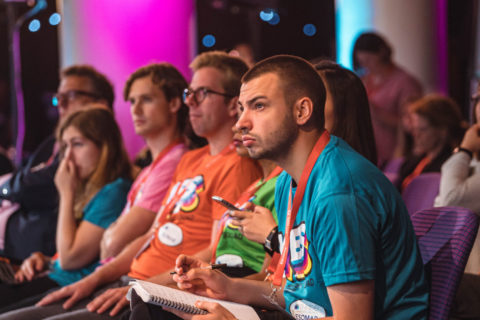Each month ‘Insights in Action’ discusses how research and insight has made a commercial or societal difference and what you can learn from it.
The Context
Between 27th September – 6th October the IAAF World Athletics Championships take place in Doha. Team GB will be present and lead by Dina Asher-Smith and Katarina Johnson-Thompson.
Asher-Smith and Johnson-Thompson represent two females at the top of elite sport. However, while British female participation in elite sport is clearly strong, this participation hasn’t always been present at ground-roots level. However, this changed in 2015 when Sport England launched the insight-powered ‘This Girl Can’ campaign.
In 2014, The Active People Survey identified that 1.75 million fewer females were exercising regularly vs. males. Resultantly, Sport England aimed to:
“Get more women aged 14-40 to be regularly active and into sport and to keep them playing”
The Insight
Insight identified the scale of Sport England’s challenge, but also provided a solution. Sport England knew that 75% of women wanted to exercise more, but they weren’t. This moved Sport England’s challenge from being about incentivising exercise to removing the barriers to exercise.
Qualitative research identified a long and diverse list of barriers to exercise – as you’d expect from such a wide age range. However, Sport England focussed on the barriers communications could resolve. These were centred around three forms of judgement (appearance, ability, time), generating a universal insight:
“Gaining self-confidence was a major influence towards increasing activity”
The Insight Activation
This insight was developed showing females of all shapes and sizes not caring for the status quo that surrounded exercise. The campaign had three main stages:
- Being launched at the Women in Sport conference. This was supported by:
- Press coverage that told the story of a ‘hero women’ and how they overcame their individual barrier to exercise – designed to introduce forthcoming creative work
- Proactive social media conversation with women who tweeted about exercise anxieties
- A TV campaign supported by cinema advertising, social advertising and a national poster campaign – designed to be wide-reaching and drive mass appeal
- A self-identification initiative, where females shared stories of them exercising with photos and/or using the #Thisgirlcan hash tag – designed to motivate
The Impact
‘This Girl Can’ achieved incredible reach by 2016:
- The core film was viewed 57.1mn times and shared 806,000 times
- Over ½ mn social media fans
- 690,000 campaign mentions
Furthermore, ‘This Girl Can’ received critical acclaim, winning 9 awards, including four at Cannes.
But most importantly, the campaign changed attitudes and behaviour:
- Attitudinally, qualitative research showed that exposure to the campaign motivated females to partake in exercise
- Behaviourally, quantitative research showed that ‘This Girl Can’ inspired 1.6mn women to start exercising and a further 1.2mn to increase their exercise participation
The Learnings
‘This Girl Can’ provides three key learnings:
Optimum Use of Insight in Advertising
- To diagnose a problem and refine it to reframe a communications solution
- To develop a creative base for communications
- To understand the attitudinal and behavioural impact of communications
Distillation & Focus
‘This Girl Can’s’ original qualitative research produced vast insight about females and exercise. The success in identifying which insights were relevant and communicable allowed a mass of information to be distilled into three areas, with one universal insight. This distillation allowed creative development to be focussed and the communications which followed to be consistent in their message.
Insight Effectiveness Communication
Too often researchers speak about their findings in the language of methodology.‘This Girl Can’ does not. By simply extrapolating its impact onto population figures, the campaign can talk about its effectiveness in the more tangible form of population volumes vs. percentages.


